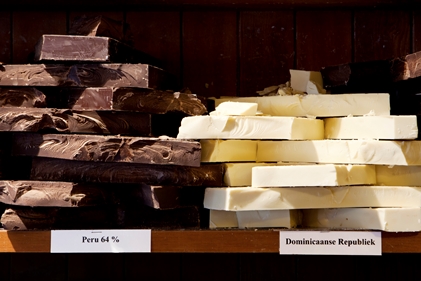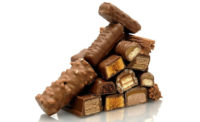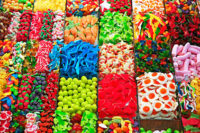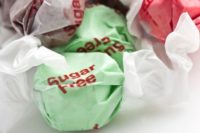Specifically, the report found that:
-
U.S. Sales: US chocolate confectionery sales grew 24 percent from 2009-2014 to reach $21 billion.
- New products: Chocolate innovation has increased, with new product launches growing 18 percent between 2013 and 2014.
-
Continent breakdown: Europe accounted for 51% of all product launches, followed by Asia Pacific 21%, North America 12%, Latin America 9%, and Middle East/Africa 6%. -
American consumers: Some 85% of US consumers buy chocolate.
Growth of chocolate sales
The global chocolate confectionery market experienced some high points in 2014, especially in Asia. Specifical, the following countries saw the following increases:
- South Korea, saw an increase of 19 percent
- India saw an increase of 18 percent
- China saw an increase of 16 percent
- Vietnam saw an increase of 12 percent
Also, while chocolate confectionery remains popular in the US — with 85 percent of adults buying chocolate — an intensifying spotlight on health, rising costs, and competing chocolate-flavored offerings across food and drink, strains its hold.
Mintel does predict steady growth through 2019 though, with the US chocolate market reaching $25 billion.
“The challenges facing the global market in 2014 have been related in part to supply, as the price of cocoa increased 9 percent in the first 10 months of the year, driven up by a number of factors including increased demand, climate change, and crop disease,” explains Marcia Mogelonsky, director of insight, Mintel Food and Drink
As for the future, she says Asia is set to lead the way in market growth, while more established markets like North America and Europe will grow at slower rates.
“Consumers in these markets tend to prefer “favorite” products and are not willing to experiment with innovative or novel — and typically more expensive — products,” Mogelonsky explains.
Americans see chocolate as a treat
The good new is, more than half (53 percent) of US consumers eat chocolate once a week or more.
Among chocolate eaters, nearly three quarters (72 percent) eat chocolate as a treat. And, 32 percent of chocolate buyers purchase more chocolate around the holidays, including Easter, to have on hand for personal consumption.
Similarly, one third of consumers (33 percent) buy more chocolate around the holidays to give as gifts.
In addition to treating oneself, almost a third of Americans (29 percent) eat chocolate as a mood enhancer. And that number increases to 41 percent when you just look at Americans between the ages of 18-24.
When it comes to chocolate preference, the majority of chocolate buyers (71 percent) are looking for options with mix-ins as oppose to plain/unflavored varieties, according to Mintel’s Chocolate Confectionery - US 2015.
Europe leads the way in innovation
As for the global chocolate market, it has benefited from innovation in the last year, with new product launches growing 18 percent between 2013 and 2014.
According to Mintel Global New Product Database (GNPD), the following continents accounted for the respective percentage of product launches:
- Europe, 51 percent
- Asia Pacific, 21 percent
- North America, 12 percent
- Latin America, 9 percent
- Middle East/Africa, 6 percent.
Chocolate confectionery innovation within the US has been focused on seasonal products. Some 42 percent of new product launches were classified as seasonal — most of which were new takes on familiar products, such as a change in shape or packaging.
Also, in general, plain/unflavored candy sales are seeing steep declines, while products featuring nuts and nut flavors are on the increase.
“The global chocolate market has seen considerable innovation in flavor and texture — including flavors such as beer and yogurt capturing consumer attention,” Mogelonsky explains. “In addition to enhancing the flavor of chocolate confectionery with added ingredients, there has also been newfound focus on chocolate itself, with both white and dark chocolate gaining in popularity”
And, she says, new product development continues to be imaginative, as more companies are willing to create products with new flavors and textures outside of the, “sweet flavor tradition.”
“However, efforts to innovate will continue to run up against a consumer base that tends to be more conservative in product choice,” Mogelonsky says.
Cost increases generate price awareness
About three-fourths (71 percent) of respondents are noticing price increases in chocolate confectionery.
That’s a result of the fact that the price of sugar was higher in the U.S. in 2014, with domestic growers selling sugar at prices 50-100 percent higher than in global markets.
The good news is, while the category is not considered cost prohibitive, and only 3 percent of consumers have stopped buying chocolate altogether due to price increases. However, Mintel does says, that price awareness is evident in the US market.





